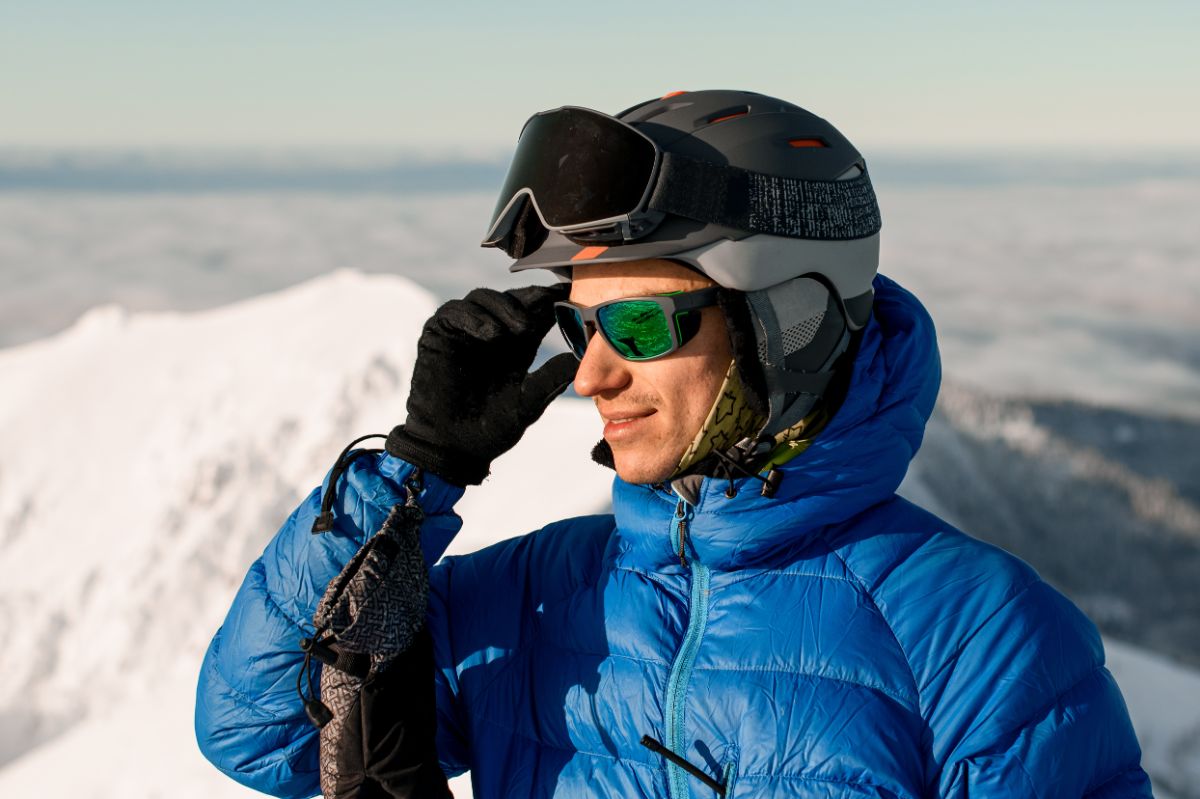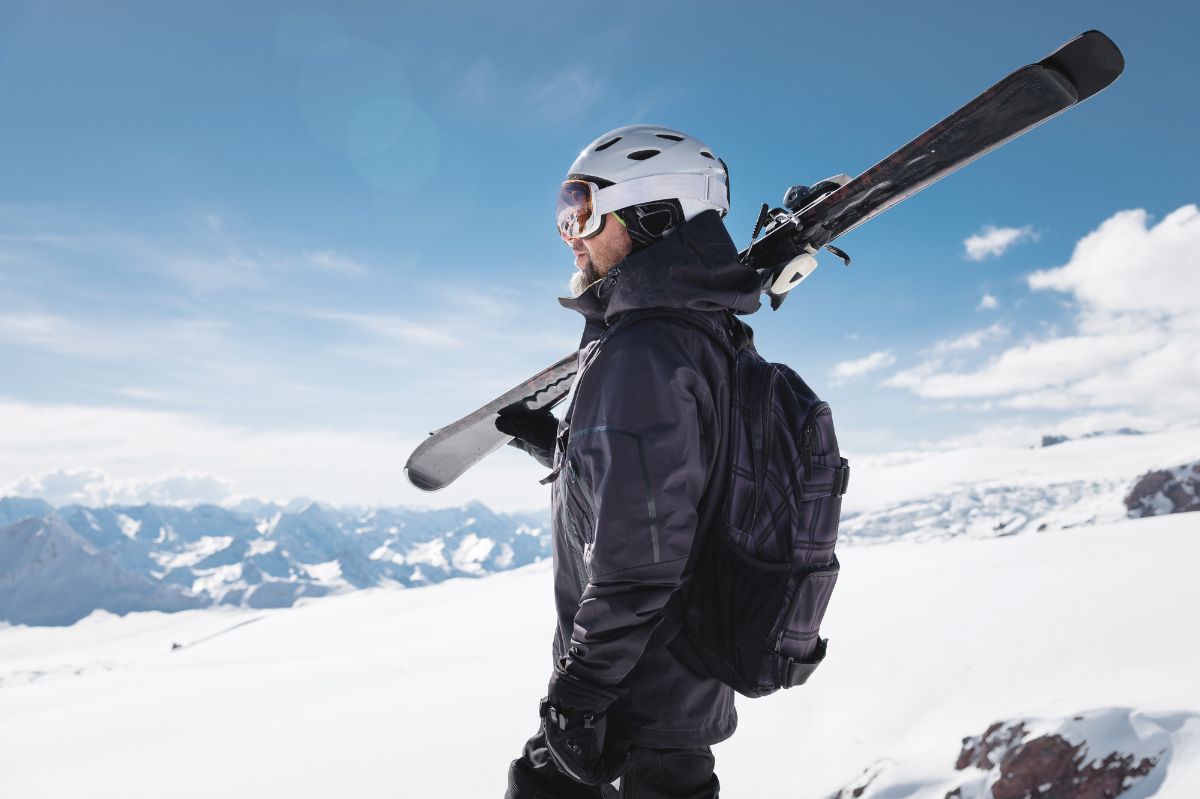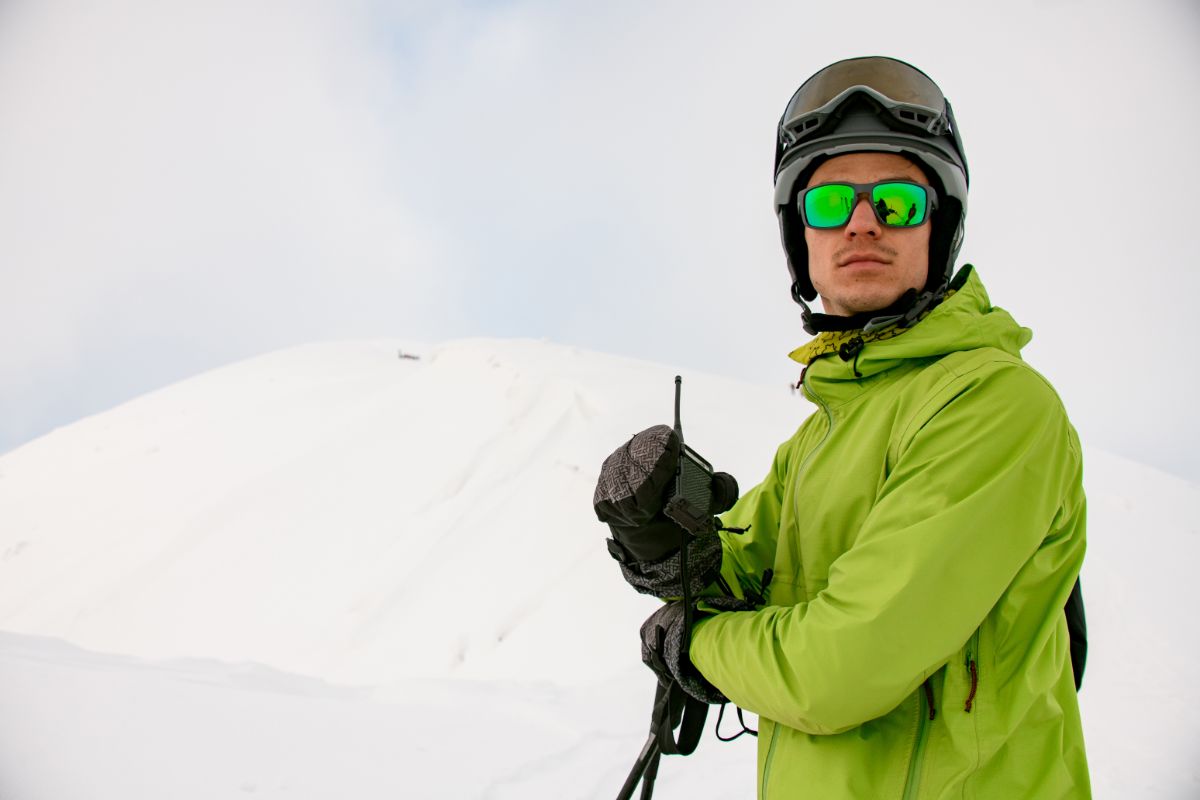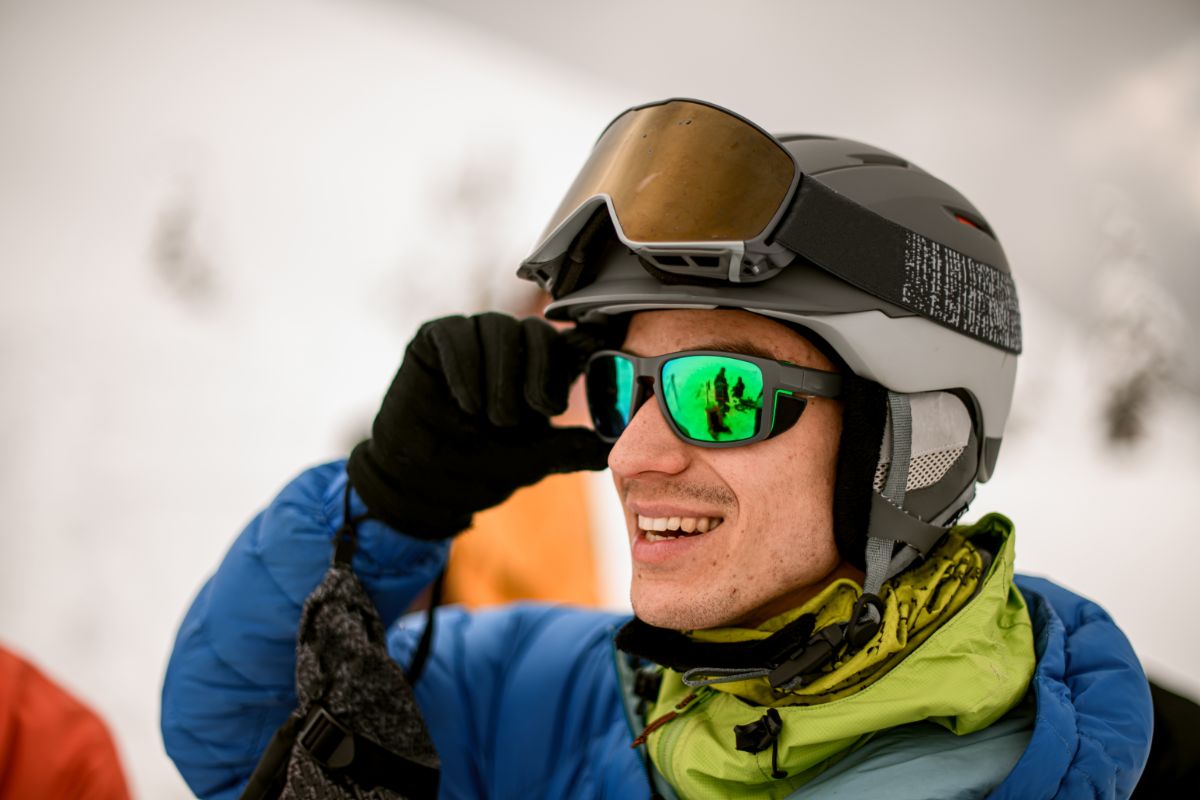
As I developed an interest in skiing, I understood that protecting my eyes while on the slopes is vital. It ensured that I boosted my skiing performance and safety. When snow or other elements hit the eyes at high speed, one can go down very fast.
In addition, the bright sun’s rays and white snow color can distract vision when navigating the slopes. Choosing between goggles and sunglasses can be daunting as they both have differences, merits, and demerits.
In this article, I have articulated all that one needs to know about goggles vs. sunglasses and when to wear them.
What are Goggles?
Initially, goggles were only used in bad weather but have become prominent for skiing and snowboarding. Ski goggles are considered one of the best eye protection for skiing as they offer numerous benefits.
Additionally, they are also made with technologies that uplift your skiing experiences. It can be pretty tricky to ski without goggles, especially on a windy day. Goggles ensure that I get the protection I need to navigate the mountains.
In addition, I’m able to withstand wind and other elements that can cause vision impairment. Goggles also protect you from UV damage and snow blindness, especially at high speed.
Some goggles are made with dark lens tints that help one beat the sun’s glare, which helps spot even the tiniest patches on the snow. Below are some of the advantages I experienced while using goggles for skiing:
Provide Ample Coverage

Goggles are large enough and ensure that the better part of the face is protected from the elements during skiing. Rather than providing coverage for the face only, goggles also block cold air that can be distractive when skiing.
Goggles also trap heat which keeps the face warm. Also, when skiing in areas that have trees and branches, goggles offer substantial protection compared to sunglasses.
They Fit Perfectly
Most goggles, if not all, come with a strap that ensures that they are held tightly on the face. This is vital in ensuring that they do not fall off, especially when at high speeds. Goggles are also a perfect match with helmets as they fit well over the helmet. Moreover, goggles can be held together with the helmet, enhancing protection.
A Wider Field of Vision

Goggles have a panoramic view as they have lenses that are far away from the eyes. This ensures that you have a wider field of vision than when wearing sunglasses. As such, you will be able to analyze the ground well and improve your skiing experience.
They Offer More Protection
Materials that are used to make goggles are sturdier and more robust. In case of a fall or you encounter hard objects, you will have a higher chance of surviving severe injuries. I noticed that sunglasses are highly susceptible to damage even by minute elements.
What Are Sunglasses?
Sunglasses are another option for protecting your eyes when skiing on snow. Although goggles are the most preferred option, sunglasses also have their share of benefits.
The best thing about using sunglasses when skiing is that they are lighter and more comfortable as you ride down the slopes. In addition, they can be fitted with your prescription.
There are numerous sunglasses styles and designs that you can use. The wraparound designs are preferable as they provide more coverage, while photochromic ones are ideal for minimal exposure to direct sunlight.
I love photochromic sunglasses because they are best for adjusting to different light situations. Here are some of the advantages I get when using sunglasses:
Less Heavy
The weight of sunglasses ensures that one experiences exceptional comfort when enjoying the slopes. They are lighter than goggles which is vital when navigating in the snow.
The Lenses Are Easier to Find

Finding sunglasses’ lenses is easier than those of goggles. This ensures that I do not have a hard time finding the protection I need when skiing.
Less Fog
Sunglasses do not fog up fast, which is essential when skiing for long. I do not have to frequently remove the sunglasses to clear up the fog as compared to when using goggles.
How Are They Different?
After understanding the key features between goggles and sunglasses, let’s look at their differences. There are instances where sunglasses are better than goggles and vice versa.
In this regard, you need to know what and when to wear for the utmost protection. In this section, I have articulated all one needs to know when wearing either of them during skiing.
Features
Sunglasses are important for protecting your eyes from bright and harmful rays, which is essential when skiing. On the other hand, goggles are best for guarding the eyes against dust, snow, and wind. Although most people think both are the same, goggles are more close-fitting than sunglasses.
Sunglasses are preferable for people who love diverse designs. Rather than protecting the eyes when skiing only, they can also boost style when in the snowy mountains.
They are also great for providing protection from harmful rays. This ensures that vision remains intact when skiing. Sunglasses are also best for protecting the eyes from bright light by up to 97%.
Sunglasses can either be polarized or non-polarized. Polarized sunglasses use special coatings or materials to prevent glare. They also make it easier to see in water and snow, and they can be very useful in preventing eye strain.
That’s why they are usually the best choice whenever I’m outside, especially during the sunny summer months. Non-polarized sunglasses block out most of the light, but they can still be useful for protecting the peepers from the glare of high light.
They are also popular as sports shades because they can prevent snow and moisture from building up inside the lenses.

Sunglasses can protect your eyes from harmful UVA and UVB rays and the effects of blue light. The visible light to our eyes is called “white light.” The human eye contains two types of light-sensing cells: rods and cones.
When there are more rods than cones, which happens when you’re in bright light, white light does not come into focus.
Goggles offer a variety of lenses and can be modified to fit the user’s specific needs. They are perfect for outdoor activities or winter sports, but they can also be used for recreational and job-related activities. Goggles do not provide as much UV protection as sunglasses.
However, they are still a necessity for most occupations. Their addition of a chemical layer or microfiber technology blocks harmful UV rays. They are also designed for comfort. While wearing them, the eyes are less exposed to the unnecessary impact of strong light and the irritation from chemical fumes.
Goggles come with different lenses that can reduce glare and protect eyes from the intense sun’s glare. The lenses range from clear to mirror to cobalt blue, depending on the user’s preferences and needs. Goggles are perfect for sports that involve water or debris.
They help protect against chemicals and also offer protection against bright lights on a sunny day or snow blindness when it’s snowy outside.
Goggles are also great for construction sites and factories. They are made with a chemical defense layer, which is designed to protect the eyes from harmful chemicals like propane and asbestos, as well as dirt, dust, or other hazardous materials.
FAQs
Do I need prescription lenses for goggles?
If one needs to use prescription glasses or contact lenses, they will also require prescription goggles for full protection. Prescription goggles can be custom-made for your specific needs.
What are the different types of goggles available?
There are three main types of goggles: tinted lenses, wraparound goggles, and full-face goggles.
Are prescription sunglasses a real thing?
Yes! Prescription sunglasses are manufactured to look exactly like normal sunglasses. However, they have specially-made lenses that can protect the eyes from harmful rays and bright sunlight while still allowing one to see clearly.
Are some goggles better than sunglasses?
Prescription goggles are more effective at protecting the eyes from harmful UV rays than prescription sunglasses. Also, prescription goggles have a deeper surface area than ordinary sunglasses, allowing more light into the eyes.
Conclusion
Sunglasses and goggles protect you in numerous ways when skiing. However, sunglasses are often regarded as a fashion item, while goggles are prominent for offering substantial face protection. Both sunglasses and goggles protect you from harmful UV rays, dust, other airborne particles, and UV rays that can cause eye diseases.
Although I’d highly advocate wearing goggles while skiing because they provide a wider field of vision and protect your face, it all comes down to your preference. Happy skiing!


